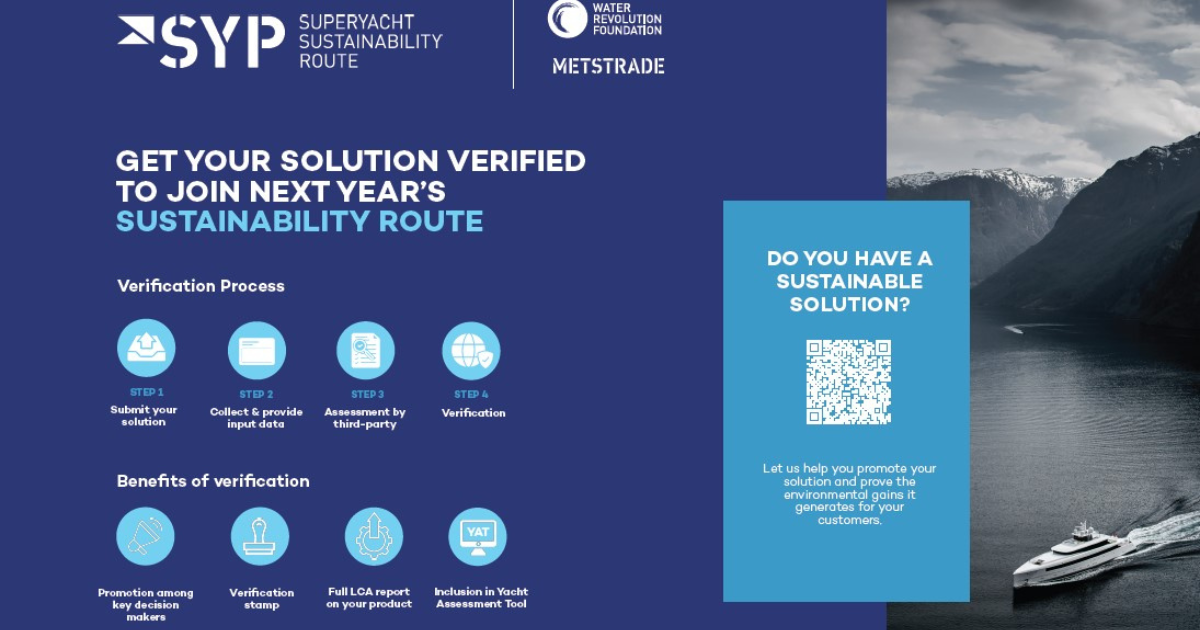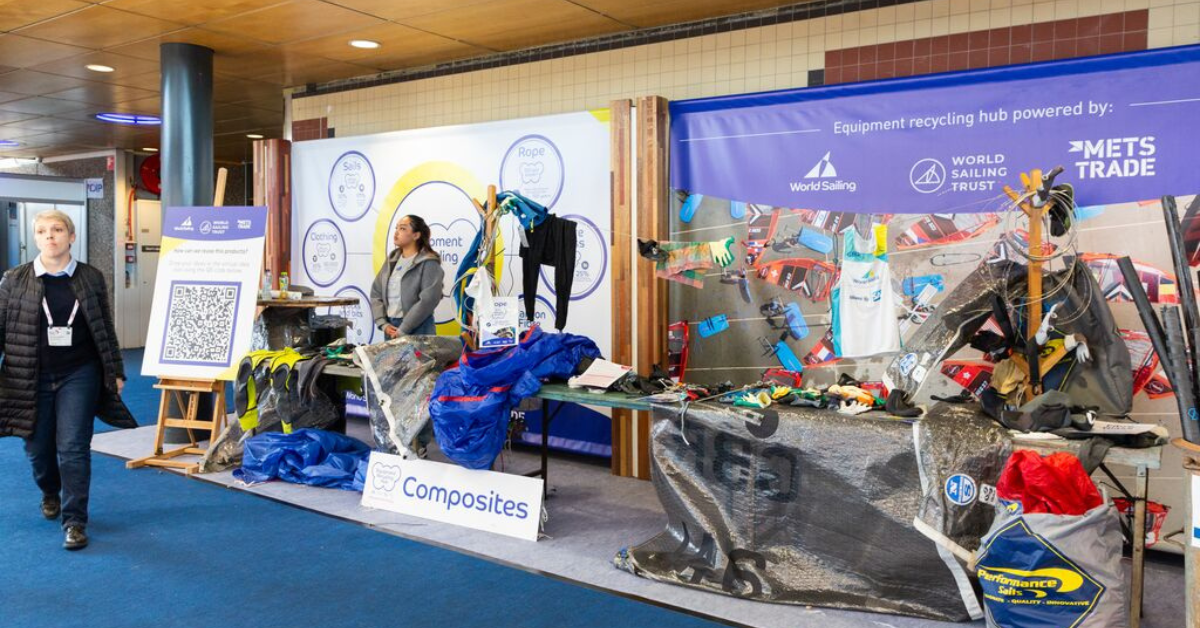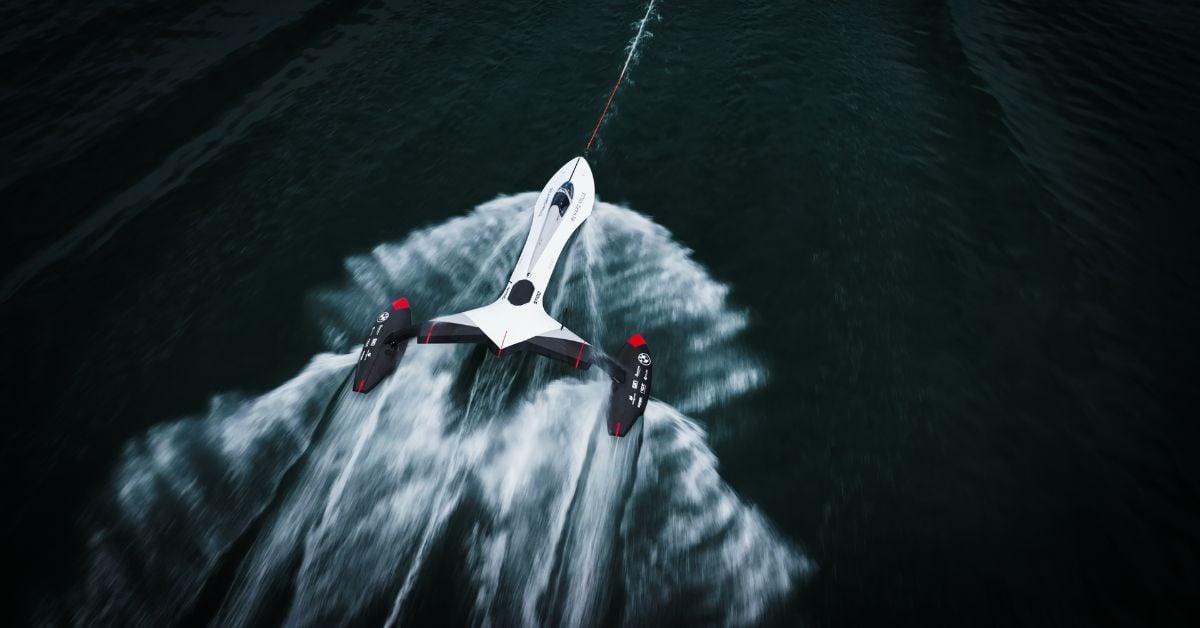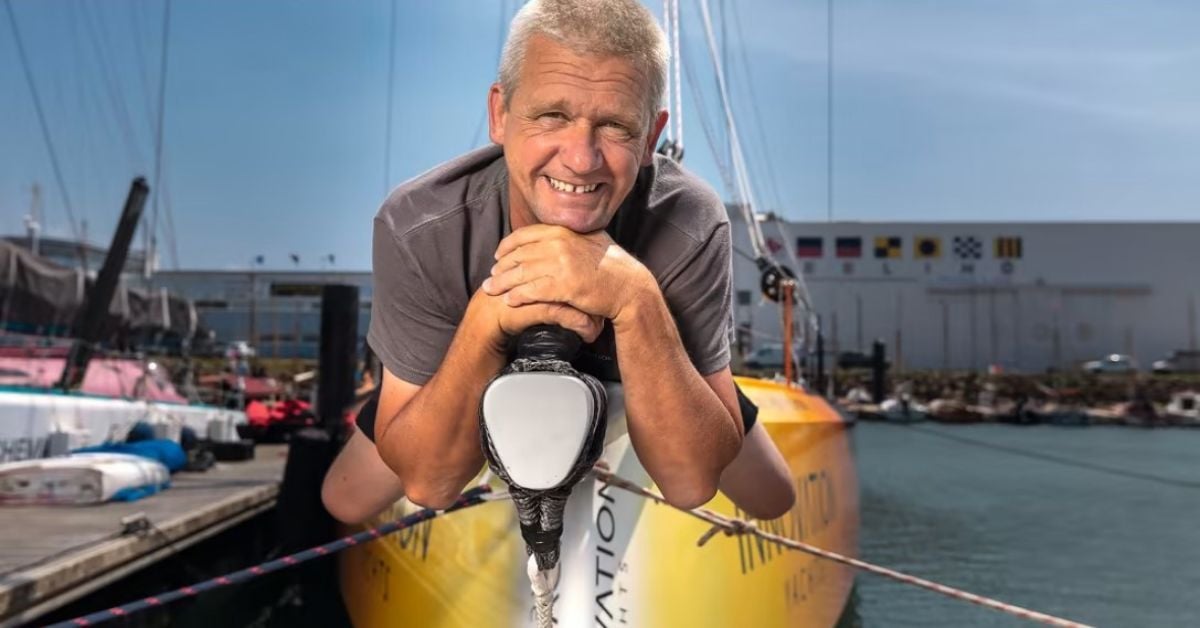The Science of Sustainability

METSTRADE partners with WRF to present METSTRADE Superyacht Sustainable Route
The Science of Sustainability
Impact of a yacht and its equipment on the natural environment can be calculated. By doing this, equipment or even a yacht as a whole that claims to be environmentally friendly can be measured for their true contribution to reducing harmful emissions. An industry-wide index enables comparison of green solutions, to help yards and owners with choices towards more sustainable yachts.
Life Cycle Assessments (LCA) examine the total use of resources as well as the remaining value after use of any product. As a result of the efforts of certification societies, a database is created that makes it possible to evaluate the use of resources and energy when a product is made out of steel, wood, resin-based composite or any other material. Mining, transport, energy for production and energy consumption during the product use as well as the energy needed to recycle the product, is taken into account.
Verification
The Water Revolution Foundation (WRF) has developed an LCA-based assessment tool for yachting equipment. Manufacturers that enroll their product for WRF LCA will be examined for their use of resources: where do they source their materials, how do they organize transport, how is production and distribution set up? How much energy does the equipment use during its lifetime? If the product is found to score significantly better than industry standards, WRF may declare the product a ‘Verified Solution’ and gives it a stamp.
Improving standards
“We want to highlight products that truly contribute to more sustainable yachting and present these as a solution that industry and owners may be looking for,” WRF Executive Director Robert van Tol explains. “We determine a product as verified solution only if the result of our science-based assessment proves better than the mainstream version in the yachting industry. Mind you: the verification is not permanent, because the industry is constantly progressing and the sustainability score of products is likely to become better from the majority of manufacturers. This should stimulate continuous improvement of products, which our assessment also helps by, it is not meant as judgement.”
Parameters
The ‘Verified Solution’ stamp was introduced by WRF last year and the organization is assessing a variety of products at this moment. A database of sustainable solutions will be available on their website in the course of this year. For a product to be labeled a verified solution, its impact is studied on nine environmental parameters. These are global warming, ozone layer depletion, photochemical oxidation, acidification, euthrophication (emission into water that enriches nutrient and provokes the growth of algae and other species, often couased by grey and black water discharge when it relates to yachts), its water scarcity footprint and the emission of Nox, Sox and particle matter (soot).
Analysis
“Of course, yachts and all that is related to them, are objects loaded with emotion,” Van Tol acknowledges. “Yachties enjoy being on the water and surrounded by the beautiful marine ecosystem, which should remain available for generations to come. Our method is analytical. This is not always in line with the emotional decision making when it comes to yachts. Still, we want to provide an objective measure to help making the right decisions. Our index could tap into that emotion. We want to stimulate environmental ambitions for a new project or upgrade of an existing yacht by expressing efficiency in a single score, which enables to compare with other yachts in the fleet”.
Products and Yachts
This factual approach is also used to determine the overall efficiency of a yacht in the Yacht Environmental Transparency Index (YETI). This index was launched by WRF last year as a tool for yacht owners to review the efficiency of energy use aboard their craft. Some 70 yachts are assessed already. YETI looks at the energy efficiency related to the operational profile of yachts.The operational profile of a yacht in general shows that it is underway some 10 percent of the time, at anchor some 30 percent and in harbor up to 59 percent. One percent of the time underway, the yacht reaches top speed. Speed requirements are often leading in the commissioning contract of a yacht. This results in inefficient propulsion at more commonly cruised speeds. The non-propulsive systems, especially air conditioning, take up more energy than one might realises, these installations are operational almost all of the time. Using an extensive LCA method like with the product certification, WRF calculates the efficiency of the yacht based on installed systems and benchmarked against the average operational profile. This results in a YETI score, expressed in one single number. “The YETI score can be regarded as a starting point,” Van Tol explains. “It offers insight in the operational efficiency of the different systems. Yachts are serviced and upgraded regularly. We hope that the YETI analysis will encourage owners and managers to improve on their score. The index is transparent. If new equipment is needed, the effect of different options on the YETI score can be evaluated. This way, the replacement parts can be chosen that result in the best environmental improvement.”
Bigfoot
In-accidentally, Yeti is the name of the mythical terrible snowman, also known as Bigfoot. In terms of environmental footprint, this may prove to be a fitting name for the impact of large yachts on use of resources and emissions to the environment. Awareness of the size of this footprint is a starting point for reduction. “The large yacht customers are in a position to take the lead by embracing and developing new technology, which as such becomes earlier available at scale for a broader audience” Van Tol expresses. “It is our mission to inspire and help them to do so.”
METSTRADE Superyacht Sustainable Route
METSTRADE presents The METSTRADE Superyacht Sustainable Route. Suppliers of yacht equipment, ranging from tools for hydrodynamic improvement, fouling resisting underwater coating or underwater lighting and more, who offer products that help reduce the ecological footprint of a yacht, are grouped in this route. All of the equipment on this route is labeled a ‘Verified Solution’ by the Water Revolution Foundation (WRF). Their life cycle assessment tool takes the whole process of manufacturing, use and recycling into account. The origin of materials, the production process, the energy needed during the products’ lifetime of use as well as the re-usability of materials and components is evaluated before WRF concludes this equipment scores above industry standards and can earn their stamp.
Yards looking for the greener solutions to build on their new yachts and owners looking for improvement in terms of sustainability when replacing equipment, can find products along this route that are proven to be more sustainable.
waterrevolutionfoundation.org


